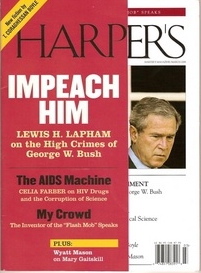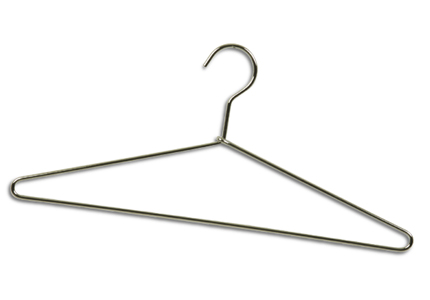 A few days ago, I posted something about how I’d been remiss in not writing more about the poverty epidemic in America. Tonight, I’m going to write about the possibility of a Bird Flu pandemic, something else that I’ve also been remiss in covering these past few weeks… Sorry… So, will another pandemic happen? Most experts, at least from what I read, agree that there has to eventually be another one. The question is, when will it come, and how severe it will be. (We’re all just holding our breath and hoping that the current strain of Bird Flu, which has alread made the jumpt to humans, doesn’t become transmitable from human-to-human. When/if it does, a pandemic is almost certain.)
A few days ago, I posted something about how I’d been remiss in not writing more about the poverty epidemic in America. Tonight, I’m going to write about the possibility of a Bird Flu pandemic, something else that I’ve also been remiss in covering these past few weeks… Sorry… So, will another pandemic happen? Most experts, at least from what I read, agree that there has to eventually be another one. The question is, when will it come, and how severe it will be. (We’re all just holding our breath and hoping that the current strain of Bird Flu, which has alread made the jumpt to humans, doesn’t become transmitable from human-to-human. When/if it does, a pandemic is almost certain.)
It may not be in our lifetimes, and it may not be a strain of Bird Flu, but the consensus seems to be that we’re eventually going to see another epidemic comparable to what we experienced in 1918, when the Spanish Flu (a strain of Bird Flu that evolved to a point where it was transmittable between humans) claimed the lives of between 50 and 100 million people worldwide. Some argue that a similar strain today may not be as long-lived due to advances in detection and treatment, and the rapid response of federal and state entities, but I suspect that those positives are substantially offset by the ease of travel these days. In 1918, after all, they didn’t have transcontinental flights with recirculating air systems perfect for distributing such viruses. (And, if the FEMA response to Hurricane Katrina is any indication of what we can expect from our government, I wouldn’t count on them being able to get into a community quickly and establishing tight quarantine boundaries.)
It doesn’t get covered much here, but around the world right now people are destroying birds by the millions, trying to stay one step ahead of the virus. Here at home, the signs of impending trouble are a little less overt. One local sign that I just noticed over the weekend is that our local Petco is decreasing the size of its bird room by half. I might be reading too much into it, but I suspect it has something to do with the fact that the threat of “Bird Flu” is slowly seeping into the mass culture.
Last week two prominent pieces ran in USA Today. Both painted dire pictures of where we are today relative to planning and infrastructure. Here’s a clip from the first article:
If a serious flu pandemic occurs, where you live and how well your community has prepared could mean the difference between life and death…
State and local health agencies, perpetually understaffed and short of cash, are struggling to prepare.
Officials of these agencies say they need help, not only in the form of money to pay for training, staff and supplies but also guidance to make sure each of the approximately 5,000 state and local health departments is working from the same set of assumptions so that there is a degree of uniformity. If not, there could be chaos: One county could close schools and ban sporting events to restrict the spread, while a neighboring county goes about business as usual. One state could designate police and firefighters as “essential workers” and give them antivirals and vaccines, while the next state designates snowplow drivers and grocery store managers as essential. “We can’t afford to have 100 flowers blooming,” says Maine state epidemiologist Kathleen Gensheimer. “We need minimum standards”…
How long we have before a pandemic is anybody’s guess, but infectious-disease specialist Brian Currie of Montefiore Medical Center in the Bronx, N.Y., says the further off it is, the more ready communities will be.
“Time and geography are buying us a year, probably,” he says. “But we’d better be ready then. We’d better make good use of our time.”
A $350 million emergency appropriation bill was passed by Congress in December, but progress isn’t being made fast enough. (According to the Avian Flu site maintained by Health and Human Services, the disbursement of funds is being done “based on a formula adjusted for population,” and the state of Michigan will receive $2,951,805 to use for pandemic planning activities.)
Here’s a clip from the second article:
The U.S. government and experts in infectious disease say these are some of the items to consider stockpiling:
If you had to be on your own, in your home, for two weeks or more, what would you need to have on hand to survive?
That’s the question Americans should consider now, before the next flu pandemic strikes, health experts say. “If we have a pandemic, stores are going to run out of food,” says Arnold Monto, an epidemiology professor at the University of Michigan. “It would be a good idea to have things available.”
Judging from previous pandemics, which occurred during 1918, 1957 and 1968, Monto says the worst waves of illness seem to pass through communities in a matter of six to eight weeks.
Computer models suggest about 30% of people could be infected, but not all at the same time, Monto says, so keeping two weeks’ supply of food and other necessities is reasonable…
Experts say Americans should plan for interruptions or delays in services. Banks might close, hospitals could be overwhelmed, postal service could be spotty and power might go out.
Michael Bell of the Centers for Disease Control and Prevention advises families to talk about what they would need if they were told to avoid gatherings or the grocery store. “Ask ‘What would we need?'” he says. “If you have a large number of children, make sure you have supplies for them on hand. If your school district decides to have people stay home from school, how is the family going to manage? Things like that are important to consider.”
Checklists provided by government agencies, including the Department of Health and Human Services and the Department of Homeland Security, are helpful but should to be tailored to the needs of individuals and families.
Among the most important bits of advice, Bell says, is to make sure everyone in the family practices good hygiene by covering sneezes and washing hands frequently.
“Good evidence shows hand hygiene in a community can reduce infection from all causes.”
(If a prerequisite for surviving is repeated hand-washing, I’ve got it made. As a matter of fact, evolutionarily speaking, I take this as evidence that individuals like me, with OCD, are in fact God’s chosen people. He has intelligently designed us to wash our hands regularly, and, because of that, we will be the ones making it into the future.)
Here, from that same last article, is a list of items to have on-hand.
Food: Items that can be eaten without cooking (in case the power is out), such as peanut butter and crackers; canned meat, fish, fruits and vegetables; baby food and formula; dry cereals; protein bars; beverages; and a manual can opener.
Medical needs: Prescription medicines such as glucose and blood pressure monitoring equipment; anti-diarrheal medicines; a thermometer; and fluids with electrolytes (such as Gatorade or Pedialyte). Stock up on personal needs such as toilet paper, baby diapers, feminine supplies and hand-washing supplies.
Activities: Home-learning supplies, in case schools are closed, and toys, books, games and DVDs to keep people occupied.
Other supplies: Flashlight, portable radio, batteries, trash bags, bleach, paper towels and matches.
I just went down into our basement, where our emergency provisions are kept, and we have a few gallons of water, a few gallon-drums of creamed corn and an extra-large bag of circus peanuts. Hopefully, you’re in a better situation… If you have ideas for other things that people might want to consider keeping on-hand, please leave a comment… I’m thinking that dried meats, nuts, and cornmeal would be good things to have around, as well as a hand-crank radio.
links of interest:











 To my knowledge, the first mainstream American publication to
To my knowledge, the first mainstream American publication to  A few days ago, I posted something about how I’d been remiss in not writing more about the poverty epidemic in America. Tonight, I’m going to write about the possibility of a
A few days ago, I posted something about how I’d been remiss in not writing more about the poverty epidemic in America. Tonight, I’m going to write about the possibility of a  In order to raise awareness about the recent legislation passed in South Dakota outlawing abortion, and the very real possibility that Roe v. Wade could be overturned by the Supreme Court, I was thinking that perhaps I’d set up a few EBay auctions for “home abortion kits.” Here are a few of the bullet points that I was thinking of including in the marketing materials.
In order to raise awareness about the recent legislation passed in South Dakota outlawing abortion, and the very real possibility that Roe v. Wade could be overturned by the Supreme Court, I was thinking that perhaps I’d set up a few EBay auctions for “home abortion kits.” Here are a few of the bullet points that I was thinking of including in the marketing materials.